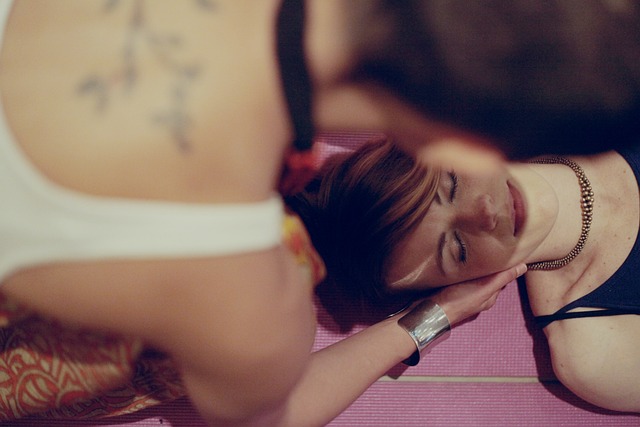Chronic stress, a natural response to demanding situations, harms mental and physical health. To manage it effectively, individuals must identify triggers and understand its cumulative effects. Stress relief techniques like mindfulness, meditation, exercise, quality sleep, and social connections are powerful tools. Regular practice of these stress relief techniques, including deep breathing, body scans, and time in nature, improves mental clarity, fosters resilience, and promotes tranquility. Adopting healthier habits like regular exercise, balanced diet, hydration, and prioritizing sleep also reduce stress, boost mood, and enhance overall well-being.
In today’s fast-paced world, managing stress is a vital component of personal well-being. This article explores effective stress-relief techniques designed to cultivate calmness and enhance overall health. We begin by dissecting the impact of stress on our lives, followed by an in-depth look at mindfulness and meditation as powerful tools. Additionally, discover the therapeutic benefits of physical activity and time spent in nature, along with practical lifestyle changes that promote a more serene existence.
- Understanding Stress and Its Impact on Well-being
- Mindfulness and Meditation as Powerful Tools
- Physical Activity and Nature for Stress Relief
- Healthy Habits and Lifestyle Changes to Cultivate Calmness
Understanding Stress and Its Impact on Well-being

Stress is a natural response to demanding situations, but chronic or prolonged stress can significantly impact personal well-being. It affects both mental and physical health, leading to various issues such as anxiety, depression, cardiovascular problems, and weakened immune function. Understanding the triggers of stress and its cumulative effects is crucial in adopting effective stress relief techniques.
By recognizing the signs of stress, individuals can proactively manage their well-being. This involves identifying sources of stress in daily life—be it work pressures, personal relationships, or financial worries—and implementing corresponding stress reduction strategies. Such techniques include mindfulness practices, regular physical activity, adequate sleep hygiene, and engaging in hobbies or social connections, all of which contribute to a healthier and more balanced lifestyle.
Mindfulness and Meditation as Powerful Tools

Mindfulness and meditation have emerged as powerful tools in the arsenal of stress-reduction techniques for personal well-being. These practices involve training the mind to focus on the present moment, accepting it without judgment, and cultivating a sense of calm. Regular mindfulness exercises can help individuals become more aware of their thoughts and emotions, enabling them to respond rather than react to stressful situations.
Meditation, with its various forms, offers a structured approach to mindfulness. Techniques such as deep breathing, body scans, and guided visualizations not only promote relaxation but also enhance mental clarity and emotional resilience. By integrating mindfulness and meditation into daily routines, folks can experience a profound sense of tranquility, leading to better stress management and improved overall well-being in today’s fast-paced world.
Physical Activity and Nature for Stress Relief

Physical activity and time spent in nature are powerful tools for reducing stress levels and promoting overall well-being. Engaging in regular exercise, whether it’s a brisk walk, yoga session, or a full workout at the gym, triggers the release of endorphins—our body’s natural mood boosters. This chemical reaction not only alleviates tension and anxiety but also improves physical health, boosting energy levels and sleep quality.
Stepping into nature further enhances these benefits. Studies show that immersing oneself in green spaces or simply sitting near a window with a view of trees and plants can significantly lower stress hormones like cortisol. Taking a walk in a park, hiking through woods, or even watching nature documentaries can transport individuals to a calmer state of mind. Combining physical activity with natural surroundings offers a double dose of stress relief, making it an effective strategy for maintaining mental balance and overall health.
Healthy Habits and Lifestyle Changes to Cultivate Calmness

Cultivating calmness in a stressful world often begins with adopting healthier habits and lifestyle changes. Regular exercise, for instance, is a potent stress relief technique that boosts mood and improves overall well-being by releasing endorphins and promoting better sleep. A balanced diet rich in fruits, vegetables, whole grains, and lean proteins also plays a significant role in managing stress levels by providing the body with essential nutrients needed to function optimally. Adequate hydration is another often-overlooked stress relief technique; staying hydrated helps maintain energy levels and mental clarity throughout the day.
Quality sleep is crucial for emotional regulation and stress management. Prioritizing a consistent sleep schedule, creating a relaxing bedtime routine, and optimizing your sleeping environment can significantly enhance both the quantity and quality of your rest. Additionally, practicing mindfulness through activities like meditation or deep breathing exercises has been shown to reduce stress, improve focus, and foster a sense of calmness and presence in daily life. These healthy habits, when integrated into one’s routine, can cultivate a profound sense of inner peace and resilience in the face of life’s challenges.
By integrating mindfulness, meditation, physical activity, and nature into our daily routines, along with adopting healthy habits and lifestyle changes, we can effectively manage and reduce stress. These stress-relief techniques not only enhance personal well-being but also enable us to navigate life’s challenges with greater resilience and calmness. Embracing these practices is a powerful step towards cultivating a balanced and fulfilling life.
